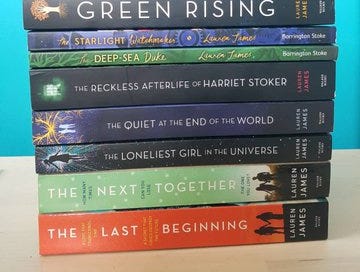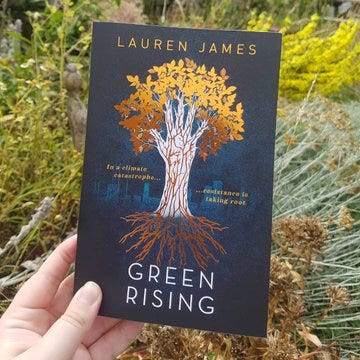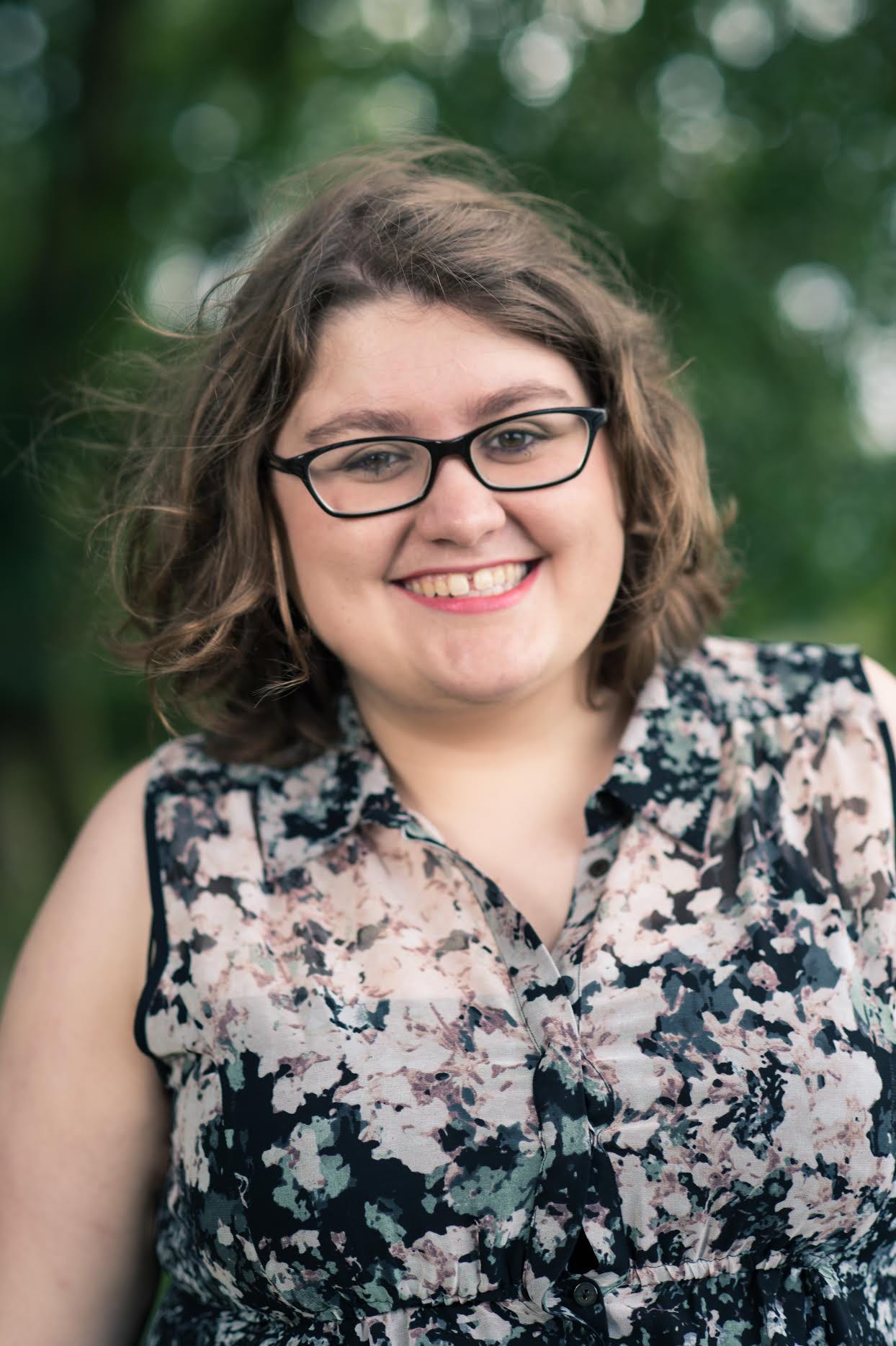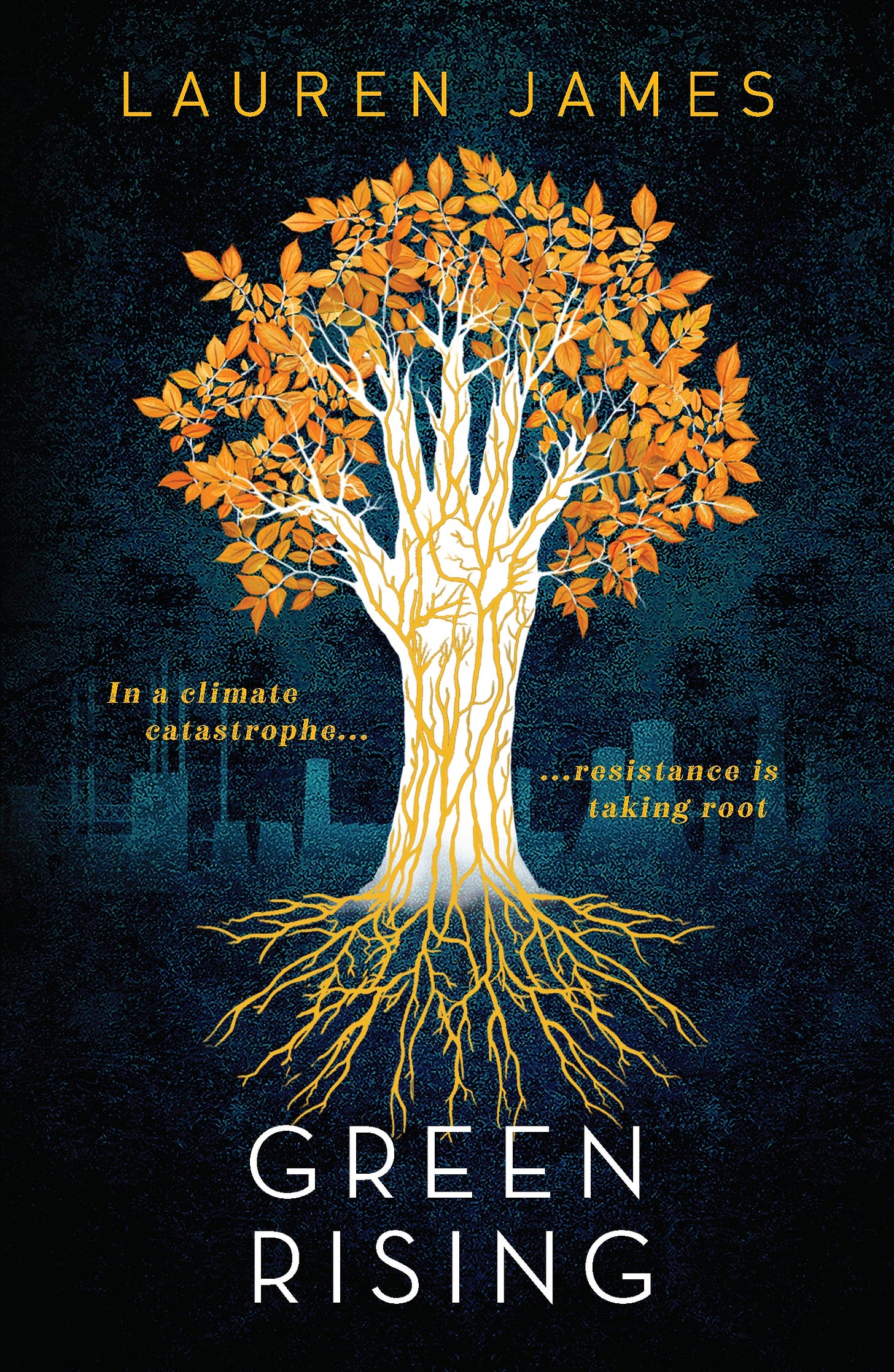As a former physicist, my writing is always science focussed. I’ve written a book about space travel inspired by special relativity (The Loneliest Girl in the Universe), a post-apocalyptic novel based on extinction and evolution (The Quiet at the End of the World), and multiple other stories with scientists at their heart.
From the beginning of my writing career, I’ve wanted to write about climate change – but I could never find a ‘way in’. It’s such a huge, complex topic that I didn’t know how to tackle it in a way which felt uplifting. My writing is primarily character and story focussed. It’s funny and romantic. That tone felt impossible to capture in a book about climate change, a topic which is discomforting at best and soul-destroying/terrifying at worst.
And while it’s a huge issue that should be treated seriously, the best stories are those which are enjoyable to experience. Those books reach the widest audience, having a better chance of spreading awareness of the climate crisis.
Eventually, I realised that I needed to focus on writing about characters who are actively working to slow climate change, rather than writing a story showing the terrors to come. I’m not interested in dark dystopias about a climate-ravaged planet. We know the dangers already. I want to read inspiring, optimistic stories that show a future where we’ve done things right.
The climate debate needs to move beyond fear at rising sea levels and pollution towards a more solutions-based view on climate change. I feel strongly that we should not be telling a generation of children that their future is unavoidably broken. Change is possible. The climate crisis is an urgent, yet utterly solvable issue. Our fiction should reflect that.
In Green Rising, the characters are teenagers who can grow plants from their skin. They use their powers to rewild the planet, and stand up to the profit-hungry corporations who want climate change to continue (because the end of the world is going to be very profitable to a lot of people). It shows the positive changes we can make to the environment which will help store carbon in huge quantities, often through plants: kelp forests, peatlands, reforestation.
I expected the writing process to be depressing and mentally exhausting. But, in fact, immersing myself in the climate debate helped me to stop feeling anxious and helpless about our future. I could see all the things that needed to be done to fix the future.
Instead of trying desperately to ignore the monster looming in the corner of my vision, I was facing it head-on. It was a lot less scary than I’d imagined. I felt like I was doing something to actively help (from writing the novel and another climate novella, The Deep-Sea Duke, to setting up the Climate Fiction Writers League, a group of over a hundred authors writing about climate change). I was no longer a helpless observer.
My research involved a lot of books (my favourites: The Future We Choose: Surviving the Climate Crisis by Christiana Figueres & Tom Rivett-Carnac, Drawdown: The Most Comprehensive Plan Ever Proposed to Reverse Global Warming by Paul Hawken and This Changes Everything: Capitalism vs. The Climate by Naomi Klein).
I’m not great at reading scientific publications – it feels too much like homework. But I am good at wasting time on social media. So I tricked myself into researching climate change through online resources like the Heated newsletter, Lights On newsletter, Inkcap Journal, and Green Light by The Guardian newsletter, as well as the How to Save a Planet podcast, Drilled podcast and Hot Take podcast.
My research clarified what I wanted to do with my writing. I was surprised by how many aspects of the climate crisis I didn’t know about. Often, the science behind the issue has been obscured by politics or fossil fuel smear campaigns and ads. I decided to focus the story on some of those factors. I trust my readers to know the basics of climate change, but they might not necessarily know about the other discussions in progress.
A big thing which is going to become increasingly topical over the next decade is geoengineering – the idea that we can take measures to slow the temperature increase while continuing to burn fossil fuels. This might include dramatic sci-fi concepts like using a solar mirror in space, or chemicals sprayed into the atmosphere, to reflect light away from the planet. These ideas are supported by the oil industry, who would be able to continue selling their products while supporting climate action. However, we have no idea what knock-on effects geoengineering might have on the planet.
I wanted to explore Juliana V. US – an ongoing legal case where young plaintiffs argue that the US government have violated their constitutional rights by failing to act on climate change. I’m interested in the way youth activist groups like Extinction Rebellion are treated by the press – as extremist terrorists and moral heroes standing up for the planet, often simultaneously.
I wanted to explore how billionaires are investing money in accessible space tourism, rather than fixing Earth. How the new, trendy NFT art and bitcoin use huge amounts of power to create cryptocurrency.
I wanted to highlight the issues related to carbon emissions, like metal poisoning from coal ash, microplastics and the garbage patches in the ocean.
And I wanted to do it all in a positive way, in a book for teenagers. It was a lot to tackle.
I tried to look at both sides of debate, because the way that climate deniers talk about the topic can often be really helpful for creating narratives (because why not let them do the hard work of being creative with arguments?). Books about climate change need characters who are working against climate action, just like in real life.
Those people – whether that’s the CEOs of an oil company, a billionaire trying to launch a space mission, or a politician with investments in fossil fuels – won’t see themselves as the ‘bad guys’. They’d be really surprised if you accused them of being one of the key people destroying the planet. To them, they’re community-builders, providing jobs and energy to keep the world running. I researched their perspective as much as possible, trying to put myself in their shoes so I could write characters who felt that way.
In general, I studied the way people discuss climate change on social media. The very human ways we interact with this topic, from fear to anger to ignorance to defiance, can be a great starting point for creating characters dealing with climate change. I subscribed to a very niche geoengineering forum, where scientists debated what should happen in future. Eavesdropping on their highly technical bickering gave me a lot of insight into the people working at the forefront of this issue, on both sides of the equation. I kept track of memes and viral Twitter threads about climate change, trying to isolate the core ideas and concerns that people were sharing online.
Once I’d taught myself as much about the topic as possible - from the science, to the politics, to the economics – I started writing. I tried not to get bogged down in the science, even though I was overflowing with anger and frustration at the world. Story always has to come first. It’s useful for me to be aware of all the context, but the reader only needs to know the things that are relevant for that particular scene or plot point. The rest can come later.
I look for the ways I can tie science into interesting ideas from other fields, like archaeology or linguistics. If you can discuss a big, often boring topic like atmospheric chemistry through the lens of something fun, it can be an exciting way to bring the reader on board.
In my books, characters explore caves full of treasure after an apocalypse, discovering cold-storage seed caches in a Doomsday Vault. They might have to deal with an outbreak of the Black Plague, after the melting permafrost thaws animal corpses which bring bacteria back to life.
I keep an eye out for interesting, well-known concepts – for example, the reintroduction of wolves to Yellowstone National Park is a science experiment which everyone knows well. It’s emotional, uplifting, and hits you right in the heart. A common idea like that is a great way to talk about something more complicated, such as how large predators can impact climate change through balancing the ecosystem.
I look for debunked or disproven theories in science, which can lead to really creative thinking. In Jurassic Park, the dinosaurs are huge, terrifying reptiles, but we now think that dinosaurs were more likely to have feathers. But a movie about a giant, fluffy blackbird-like T-Rex wouldn’t make for a very good film.
In the fifties, fossil fuel companies investigated other uses for their products, such as burning oil to blow away smog; coating land in asphalt to change rainfall patterns and avoid drought; and spraying oil droplets onto the ocean surface to divert the paths of tropical storms. These ideas seem ridiculous now, but they tell us a lot about people’s knowledge level – and motivations - at the time.
I try to think about big concepts in terms of historical events: how can we look at archaeology to get a new perspective on climate change. How might the present day look from a far-future or far-past point of view? Has something like this ever happened before on Earth?
Ultimately, climate change is a political topic - it has to be. It’s unavoidable. The end of world is profitable. My characters are angry they're being told to reduce their climate footprint, that they’re being made to feel guilty about their personal pollution when industry is responsibly for the vast majority of emissions.
I wanted to create a book for young people who are anti-capitalist and pro-revolution, who are changing the world at an incredible pace against the enormous weight of the existing establishment.
From a legal perspective, there were things I couldn’t do – I wasn't allowed to mention real life companies or people by name, and had to create fictional versions of certain things. But in Green Rising, I tried to capture the feeling of being part of the ongoing green revolution, to show what it feels like to grow up in a time of unprecedented existential fear. I wanted to write about young people turning that fear into hope and action.
It feels impossible to comprehend the scale and immensity of the dangers of the climate crisis. But with every book we write, we get a little bit closer.
My top tips for writers who want to include climate change in their work:
· Read as much climate fiction as possible – in a variety of genres, not just SFF! Check out the database on the Climate Fiction Writers League website for ideas.
· Include the activism going on outside the very vocal UK/US groups. The countries who will be most affected by climate change have amazing activists whose hard work is often ignored by the media.
· Inspire activism, but don’t imply individuals are at fault – readers don’t want to be made to feel guilty about not recycling!
· Convey the seriousness of the situation without making it seem futile. Climate change is a solvable issue, and fiction can demonstrate that better than anything.
· Show how imminent this crisis is – climate change is no longer a long-term issue for the future, but something happening right now.
· Use your anger and frustration to drive your writing, but don’t write an angry book - people don’t want to read that.
Remember that hope and optimism will inspire more action than anything else. Fiction can inspire a huge amount of empathy, and that’s a force that we can use collectively to inspire change on a global level.
Lauren James is the twice Carnegie-nominated British author of many Young Adult novels, including The Reckless Afterlife of Harriet Stoker, The Loneliest Girl in the Universe and The Quiet at the End of the World. She is also a Creative Writing lecturer, freelance editor, screenwriter, and the founder of the Climate Fiction Writers League. Her upcoming release is Green Rising, a climate change thriller.
Her books have sold over a hundred thousand copies worldwide, been translated into six languages and shortlisted for the YA Book Prize and STEAM Children’s Book Award. Her other novels include The Next Together series, the dyslexia-friendly novella series The Watchmaker and the Duke and serialised online novel An Unauthorised Fan Treatise.
She was born in 1992, and has a Masters degree from the University of Nottingham, UK, where she studied Chemistry and Physics. Lauren is a passionate advocate of STEM further education, and many of her books feature female scientists in prominent roles. She sold the rights to her first novel when she was 21, whilst she was still at university.
Lauren lives in the West Midlands and is an Arts Council grant recipient. She has written articles for numerous publications, including the Guardian, Buzzfeed, Den of Geek, The Toast, and the Children’s Writers and Artist’s Yearbook 2022. She has taught creative writing for Coventry University, WriteMentor, and Writing West Midlands.
Green Rising (Walker Books, 2nd September)
In a climate catastrophe, resistance is taking root . . .
Set in a near-future world on the brink of ecological catastrophe, Lauren James’ novel is a gripping, witty and romantic call to arms.
Gabrielle is a climate-change activist who shoots to fame when she becomes the first teenager to display a supernatural ability to grow plants from her skin. Hester is the millionaire daughter of an oil tycoon and the face of the family business. Theo comes from a long line of fishermen, but his parents are struggling to make ends meet.
On the face of it, the three have very little in common. Yet when Hester and Theo join Gabrielle and legions of other teenagers around the world in developing the strange new “Greenfingers” power, it becomes clear that to use their ability for good, they’ll need to learn to work together. But in a time of widespread corruption and greed, there are plenty of profit-hungry organizations who want to use the Greenfingers for their own ends. And not everyone would like to see the Earth saved…
As they navigate first love and family expectations, can the three teenagers pull off the ultimate heist and bring about a green rising?








